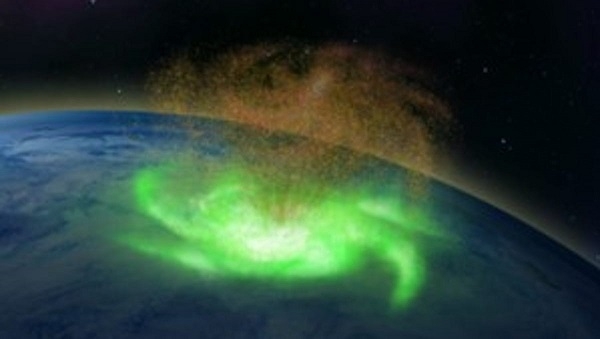Scientists discover 'Space Hurricane' over the North Pole
06 Mar 2021 15:54:03
New Delhi, Mar 6: The scientists have discovered a 'space hurricane' for the first time. The hurricane swirled for eight hours over the North Pole in the upper atmosphere of Earth. The scientists from USA, Norway, China and United Kingdom observed and produced the image of the space hurricane.

The space hurricanes usually occurred in the lower atmosphere of the Earth. Prior to the present incident, the same space hurricane was never observed in the upper atmosphere. Earlier, the space hurricane was detected in Aug 2014 during a retrospective analysis which was led by the researchers at Shandong University of China. Its findings were published in Feb 2021 in Nature Communications.
The swirling mass of plasma that rains electrons, instead of water, into the ionosphere is called as 'Space Hurricane'. The hurricane results into the stunning effect that is a huge, cyclone-shaped where a glowing green aurora can be observed below it. The astronomers have spotted hurricanes in space on Mars, Saturn and Jupiter.
The scientists from USA, Norway, China and United Kingdom observed and produced the image of space hurricane using the Defense Meteorological Satellite Program (DMSP) satellites and a 3D magnetosphere modelling. The hurricane that was detected over North Pole comprises of plasma with multiple spiral arms. It was spinning in an anticlockwise direction. The hurricane has the diameter of 1,000 kilometres while in altitude it reached from 110 kilometres to 860 kilometres. It has the speed of up to 2,100 mps.
The study of the space hurricane will help the scientists to comprehend important space weather effects like disturbances in high frequency radio communication, satellite drag, satellite navigation, errors in over-the-horizon radar location and communication systems.